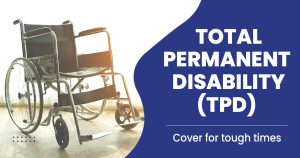There are lot more seniors in the population. Not surprising, since it has been predicted that as baby boomers age, the senior population will soar. And soar it has – there are now more seniors 65 and older in America than at any other time in history.
Better health habits, longer life expectancy and new medical treatments are contributing to the boom in seniors. The growth in the senior population is happening most rapidly on the West, which saw an increase of 23.5 percent of those 65 and older. Not surprisingly, Scottsdale, Arizona had the highest percentage of senior residents in cities with a population of 100,000 or more.
With the explosive growth in the senior population comes a unique opportunity for businesses that provide transportation – specifically non-emergency medical transportation. How do you get seniors home from the hospital or emergency rooms, or to and from medical appointments? Many companies are now trying to solve those and other transportation issues.
Providing a Vital Lifeline for Seniors
Sadly, more than 3.6 million Americans either miss or postpone medical care because they simply can’t find appropriate transportation to their appointments. And while Medicaid offers a non-emergency medical transport benefit, and provides the largest amount of federal funds to states, the states are still struggling to find affordable transportation for those who need it.
More and more healthcare is done on an outpatient basis, and those with chronic health problems require more non-emergency medical transport. In the long run providing that transportation will save money, because by helping people keep their appointments they can often avoid expensive ambulance rides and emergency room visits.
In addition, chronic health problems are growing, which include asthma, cancer, cardiovascular disease, COPD, diabetes and other conditions. More than 20 million adults who have chronic kidney disease that requires dialysis 3 times a week require transportation to their treatment.
The Increasing Need for Services
There is an increasing need for non-emergency medical transport (NEMT) and states are working on different strategies to meet those increasing needs. Some are using coordinated medical trips by tapping into other community transportation providers who are providing services to similar populations. But it’s a fragmented system that is difficult and confusing to users. In addition, Medicaid regulations provide barriers to effective coordination.
Some states are using mobility management to help coordinate transport options. Transit agencies administer this in some states, and work with various human service organizations to help coordinate transportation. Public transits are providing NEMT and is being reimbursed for their services. When their services are not available, they use private transportation options.
Many states are using brokerages, both public and private, to connect riders with transportation. It helps states have predictable costs and offers NEMT to people who need the service. Agencies or companies bid competitively for the work, and brokers are paid for eligible riders. Some states use a fee-for-service, while others mix the two.
Private companies that offer non-emergency medical transport are in huge demand and are expanding their services. They require commercial van conversions and other mobility vehicles that can accommodate wheelchairs or stretchers for transporting individuals with various types of disabilities. Many private companies are bidding for the brokerage contracts and are adding a mobility van to their fleet when they reach certain ridership numbers. The private services are especially critical in rural areas or areas with limited access to public transit.
Other Strategies
States are also looking at other ways to slow the need for NEMT. These include using new technology like “telehealth” and disease management education programs. Telehealth delivers care and information at a distance, and offers real-time communication so patients can connect with providers using video conferencing. And disease management education offers a variety of programs to help people manage their conditions without having to see a provider.
As the population continues to age, these strategies will come into play, so seniors can get to the care they will increasingly require. And new strategies and services will need to be continually developed to meet the needs of the growing senior population.

